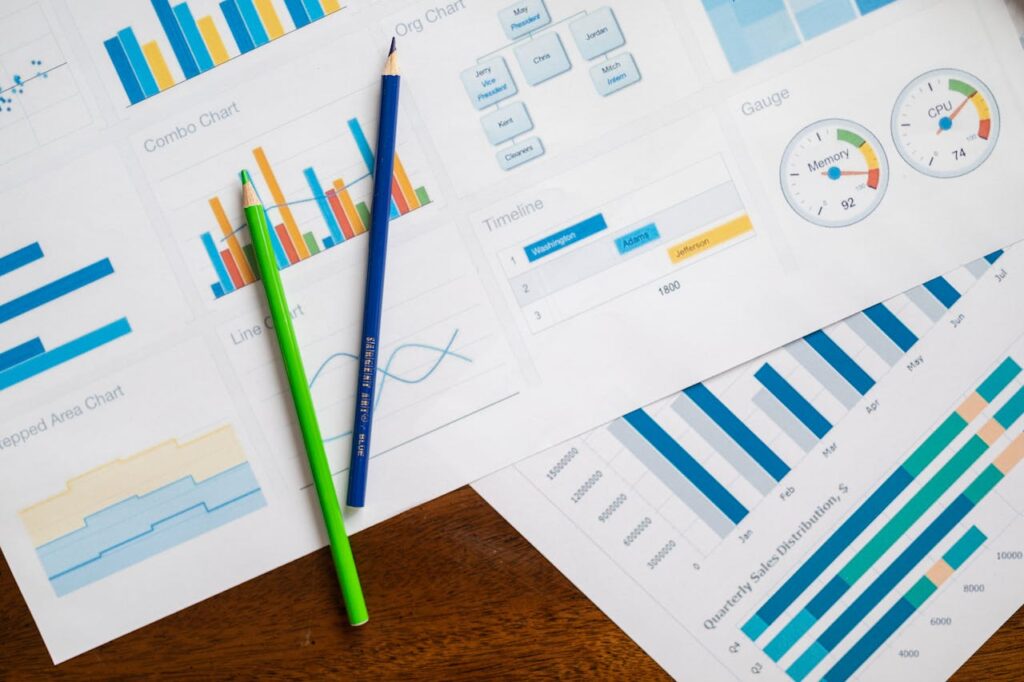Public relations professionals face mounting pressure to demonstrate measurable results and strategic value to clients and stakeholders. Industry benchmarking tools provide PR teams with data-driven insights that transform campaign planning, execution, and reporting. These platforms analyze vast datasets to reveal competitive intelligence, market trends, and performance metrics that guide PR strategy. By comparing results against industry standards and competitors, PR professionals can identify opportunities, optimize campaigns, and prove ROI through objective data.
5WPR Insights
Understanding the Strategic Value of PR Benchmarking
Benchmarking tools give PR teams an unbiased view of their performance compared to industry peers and competitors. According to research by Databox, organizations using competitive benchmarking are 36% more likely to achieve their strategic goals. This data-driven approach helps PR professionals identify gaps in their current strategies while setting realistic, achievable objectives.
The strategic advantages extend beyond simple performance metrics. PR teams can spot emerging trends, analyze successful competitor tactics, and adapt winning approaches to their own campaigns. This proactive stance allows agencies to stay ahead of market shifts rather than merely reacting to them.
Bain & Company’s research shows that companies using systematic benchmarking achieve 69% faster improvements in key performance areas compared to those relying on internal metrics alone. For PR professionals, this translates to more effective campaigns, better resource allocation, and stronger client relationships built on demonstrable results.
Key Benefits of PR Benchmarking Tools
Data-Driven Decision Making
Modern benchmarking platforms process millions of data points to generate actionable insights. These tools analyze media coverage, social media engagement, message penetration, and other PR metrics across industries and regions. This comprehensive analysis helps PR teams make informed decisions about campaign strategy, messaging, and resource allocation.
According to NetSuite’s industry analysis, organizations using benchmarking tools report a 42% improvement in strategic decision-making accuracy. The data eliminates guesswork and personal bias, allowing PR professionals to focus on tactics proven successful in their specific market context.
Competitive Intelligence
Benchmarking tools provide detailed insights into competitor PR activities and their effectiveness. Teams can track competitor media coverage, analyze message themes, and identify gaps in market positioning. This intelligence helps PR professionals develop unique angles and differentiate their clients in crowded markets.
Research from Bizminer shows that companies leveraging competitive benchmarking data achieve 28% higher media coverage rates than those operating without competitive intelligence. This advantage stems from the ability to identify and capitalize on underserved topics and angles in media coverage.
Performance Optimization
Regular benchmarking enables continuous improvement in PR campaign performance. Teams can track progress against industry standards, identify areas for improvement, and adjust strategies based on real-time data. This iterative approach leads to better outcomes and more efficient resource use.
According to Aura’s analysis, PR teams using benchmarking tools achieve 45% better campaign performance compared to industry averages. The ability to measure and optimize based on objective data drives this improved performance.
Implementing Benchmarking in PR Strategy
Selecting the Right Tools
PR professionals should evaluate benchmarking tools based on several key criteria:
- Data accuracy and breadth of coverage
- Industry-specific metrics and insights
- Integration capabilities with existing systems
- Real-time monitoring and reporting features
- Cost-effectiveness and ROI potential
Leading platforms like Databox, Aura, and Bizminer offer different strengths and specializations. Teams should select tools that align with their specific needs and objectives.
Setting Meaningful Benchmarks
Effective benchmarking requires selecting relevant metrics that align with organizational goals. PR teams should focus on:
- Media coverage quality and quantity
- Message penetration and sentiment
- Share of voice in target markets
- Engagement metrics across channels
- Campaign ROI and business impact
Research shows that organizations using clearly defined benchmarks are 58% more likely to achieve their PR objectives.
Creating Newsworthy Content from Benchmarking Data
Developing Data-Driven Stories
Benchmarking data provides rich material for creating compelling PR content. Teams can:
- Identify industry trends and patterns
- Highlight performance achievements
- Document market leadership
- Demonstrate innovation and growth
According to Bain & Company, PR campaigns built on benchmarking insights generate 73% more media coverage than traditional promotional content.
Amplifying Results Through Multiple Channels
PR professionals should distribute benchmarking-based content across various channels:
- Press releases and media pitches
- Thought leadership articles
- Social media campaigns
- Client presentations
- Industry events and speaking opportunities
Measuring and Reporting PR Success
Establishing KPI Frameworks
Successful PR measurement requires comprehensive KPI frameworks built on benchmarking data. Key elements include:
- Quantitative performance metrics
- Qualitative impact measures
- Competitive positioning analysis
- ROI calculations
- Trend tracking over time
Creating Effective Reports
PR teams should develop clear, actionable reports that communicate benchmarking results to stakeholders. Reports should include:
- Performance comparisons
- Progress toward goals
- Market context and trends
- Recommendations for improvement
- Future objectives and strategies
Conclusion
Industry benchmarking tools provide PR professionals with powerful advantages in strategy development, campaign execution, and performance measurement. By leveraging these platforms effectively, PR teams can improve decision-making, optimize campaign performance, and demonstrate clear value to stakeholders.
Success with benchmarking tools requires careful tool selection, clear goal setting, and consistent measurement practices. PR professionals should invest time in understanding available platforms, establishing relevant metrics, and creating effective reporting processes.
To get started with PR benchmarking:
- Assess current PR measurement capabilities
- Research and evaluate benchmarking tools
- Define key metrics and goals
- Implement selected platforms
- Establish regular reporting processes
- Use insights to optimize PR strategies
By following these steps and maintaining a data-driven approach, PR professionals can maximize the advantages of industry benchmarking tools and achieve superior campaign results.

More PR Insights
When PR Should Start For A New Product In Development
Digital Body Language in Modern PR Engagements
Scaling a Thought Leadership Program Without Dilution